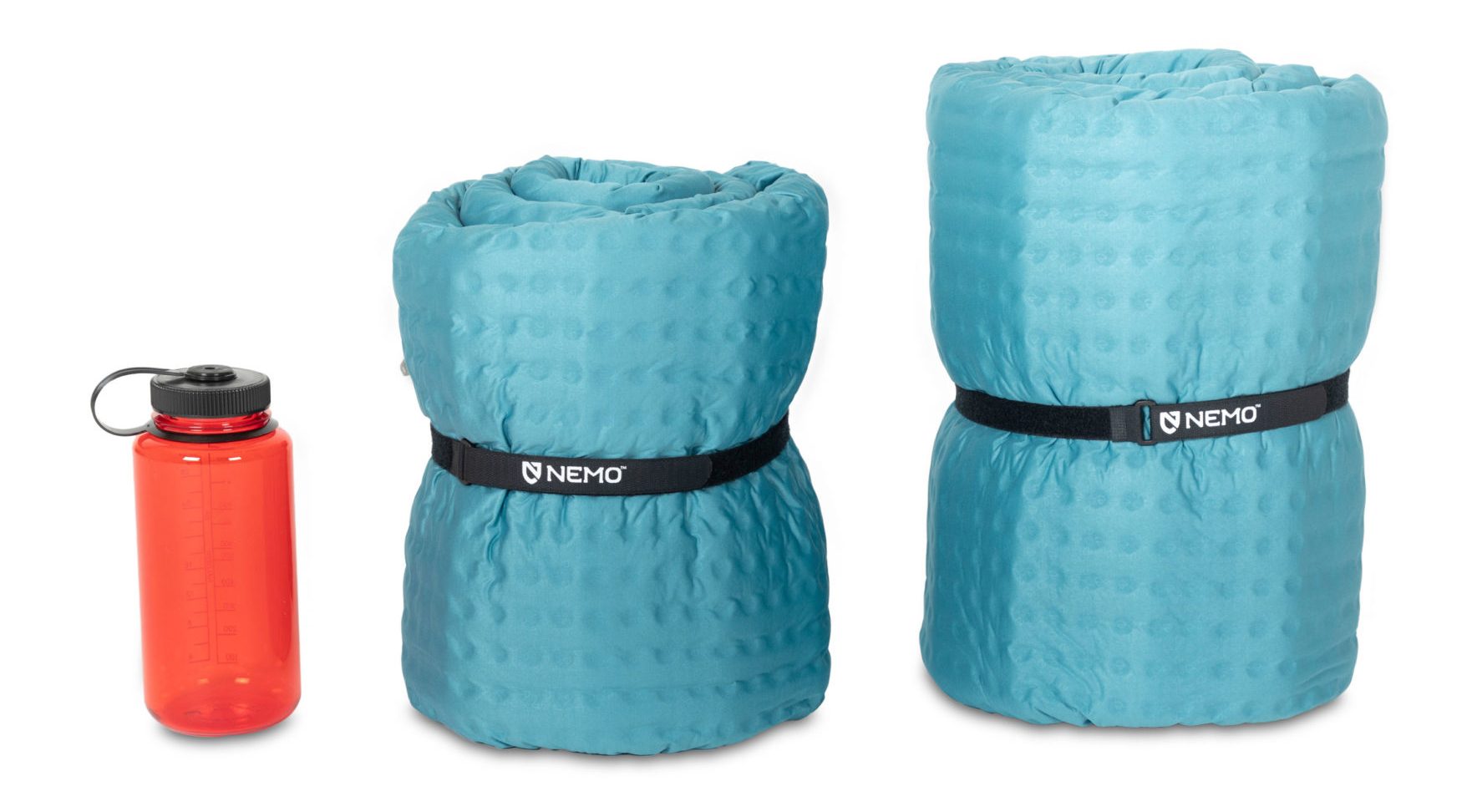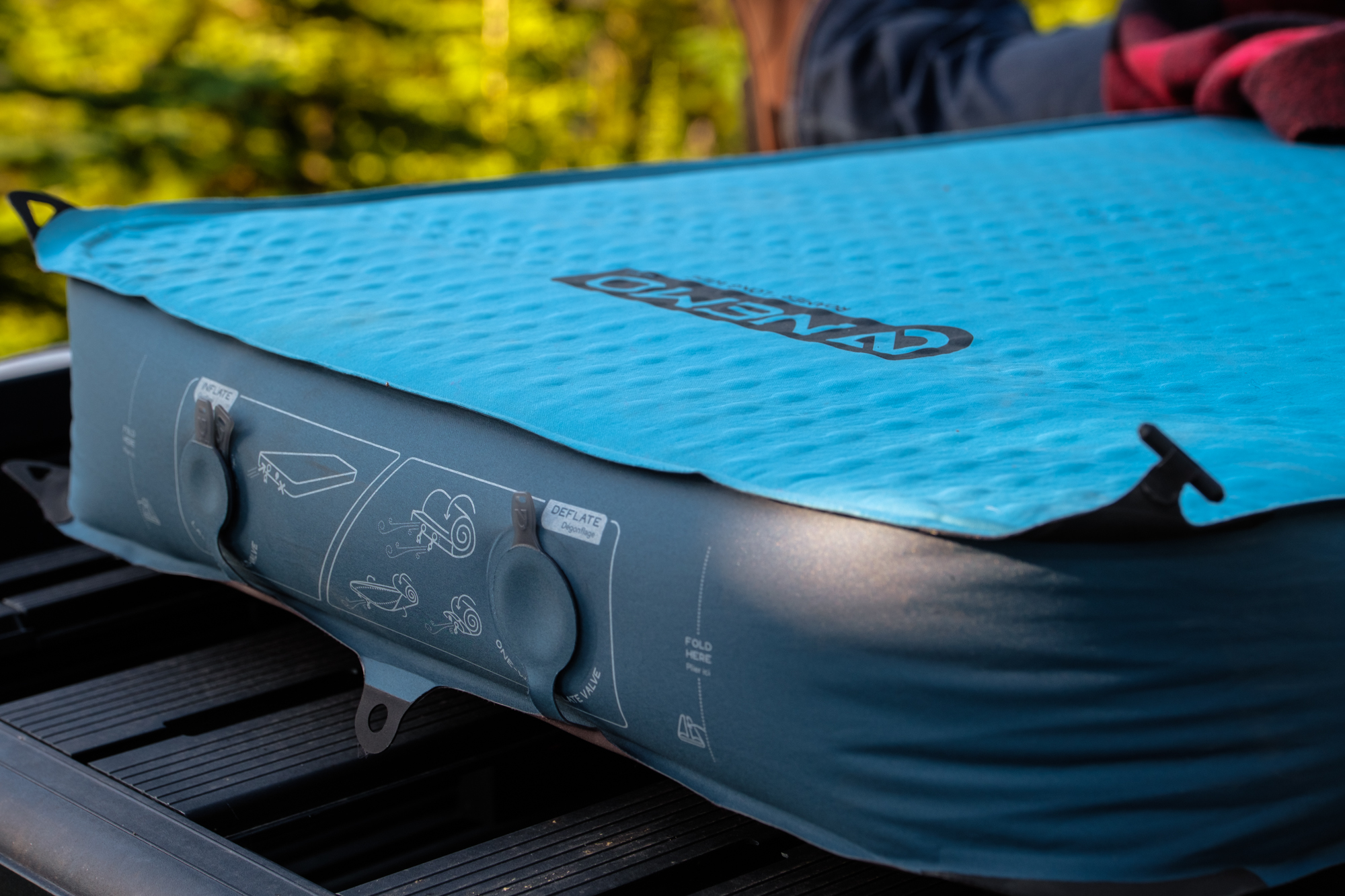It’s amazing just how much of overlanding revolves around sleep. People are willing to spend thousands of dollars on rooftop tents, install campers, and even convert the interiors of their vehicles for a good night’s rest, but who can blame them? When you’re fatigued your patience dwindles, enthusiasm burns low, and you wind up finding less joy in each moment. It will hinder decision making skills and cause tensions to rise between friends and family, which only further impacts your chance of having a great experience. Basically, getting enough sleep is critical on any camping trip regardless of length, and one of the easiest ways to ensure a good night’s rest is a quality mattress. That’s why I’m always on the hunt for the next best thing in sleeping pad tech, and that search recently brought me to Nemo Equipment’s Roamer.

The Roamer at a Glance
The Roamer is one of Nemo’s latest forays into the realm of overlanding. While many of their products are geared toward backpacking or mountaineering, and therefore subject to stringent weight constraints, the Roamer allowed Nemo’s engineers to have a little fun applying their ultralight tech to a glamping style pad. The result was a product that combined class-leading comfort and features with a packed footprint half the size of its competitors, the best of both worlds.
Who Should Buy It, and Who Shouldn’t
I would buy the Roamer if you want a pad that is super comfortable, can accommodate people over 6 feet tall, and takes up half the space of other 4-inch-thick pads. I’d also recommend you buy it if you’re looking for a pad that can be used individually on solo trips or joined together into a queen bed for couples trips.
If you’re looking for a true two-person pad, or for the most affordable option, there are better options than the Nemo Roamer.

Impressions
Saying the Roamer is comfortable would be an understatement. As one user described it in an online review, it’s “night-time bliss,” and I would have to agree. Having used one over the last few months I can attest that it is splendidly plush, however, comfort is not what separates this pad from the pack. The reality is that while it’s possible to detect small nuances between one 4-inch pad and another, the margins between them are minuscule. The real distinguishing factors are the materials, features, and price point, so that’s where we will begin.

While space isn’t as big of a deal when overlanding as it is while backpacking, most of us still find ourselves fighting for every inch we can get. The Roamer helps win this fight by collapsing to a mere 12.5 inches x 8.5 inches. That’s significantly smaller than competing 4-inch pads which seem to fall around 30 inches long and 10 inches wide. The Roamer’s smaller pack size makes it easy to stuff it into a bag of camp gear or toss in the back of your SUV without feeling like you’re wasting available space.
Deploying the pad is effortless; just unroll it from the stuff sack and let the self-inflating open-cell foam do the rest. Small adjustments in pressure can be made through the zero-profile multi-function valve, while deflation for pack-up is achieved through a one-way dump valve that won’t take on air as you try to roll the pad up. Storing the Roamer was fairly simple even when you want to place it inside the included stuff sack. Just fold the edges towards the center and tie the toggle ends together, which holds the pad in place while you roll it. Then roll from the bottom towards the top until the air it completely out, and secure with the included strap.

The top is a coated 50D stretch fabric which Nemo describes as soft and cozy, and while I do agree, other competing 30D coated pads are definitely softer. That’s alright with me, because I seldom lay directly on the pad anyway, and appreciate the added durability of the 50D. I also loved that Nemo adorned the bottom of their pad with an even heavier 75D polyester stretch fabric which strengthens it against punctures and tears from the various bits of debris you’ll find in vehicles, tents, and your friend’s floor.
Though Nemo does not disclose an R-value on this pad, they do assert it is insulated with a temperature rating of -30°F. While I haven’t tested the Roamer down to those conditions, I have used it on frost-bitten ground well below freezing and found that it was warm enough for my liking.

The pad comes in two sizes, Long Wide and XL Wide. We have been reviewing the former, and while the name may suggest it is the longer of the two, it’s not. The Long Wide is their standard pad, and measures in at 76 inches x 25 inches. What I find notable is that the total length is six feet, four inches, which accommodates a surprising number of people left out in the cold by other standard pads which often measure in at 6 feet exactly. While I realize that only 14-16 percent of American males are over six feet, and just 1% of American women, the extra space is a lifesaver for us, and a nice touch even for shorter sleepers. After all, no one likes their pillow falling off the pad in the middle of the night.

The XL Wide, on the other hand, is larger than the Long Wide both in length and width, coming in at 80 inches x 30 inches. That is an expansive size for one, yet not big enough for two. I thought this was odd at first, but it begins to make sense when you take into consideration Nemo’s innovative toggle system which allows owners to tie two pads tightly together. The concept is that when you’re out on a trip with your loved one you can have the queen bed you want by combining the toggles, and if you go out on a solo trip you can take just one pad for space and weight savings. In a way it’s genius, but also slightly flawed. For starters, there is still a seam between the two pads, which I imagine is about where people would lie down. I only have one Roamer so I haven’t tested this myself, but based on my experience with two twin beds pushed together in college I can say it probably wouldn’t be ideal.

The other problem with this dual pad system is that it’s rather expensive. With the Long Wide selling $209, and the XL Wide for $229, that places the cost of a double Roamer system between $420 and $460. For comparison, Sea To Summit sells a two-person option for just under $300, and Exped sells theirs in the $370-$390 range. Still, the added functionality of being able to separate the pads is fabulous and would be worth it if you find yourself transitioning from couples to solo travel often. If you’re looking for a full-time, two-person pad though, I would consider other options.
Overall the Nemo Roamer is a great buy, and one of my favorite single person sleeping pads I’ve tested to date. It is comfortable, easy to use, packed with features, and will save you both weight and space over its competition. To learn more, visit the Nemo Equipment website here.



